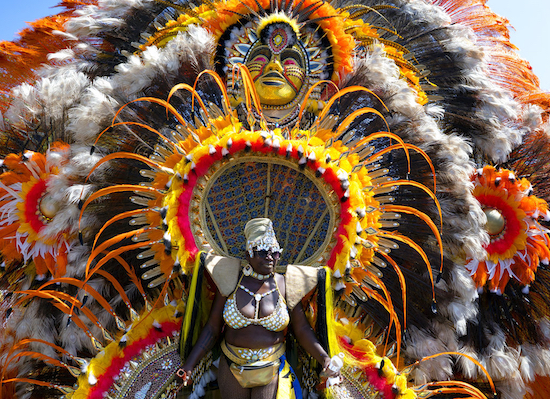Brooklyn’s West Indian American Day Parade showcases Caribbean pride, amid tight security

Revelers displaying their Caribbean pride took to the streets of Brooklyn on Monday, flags waving, music blaring and feet dancing, for New York City’s annual take on Carnival celebrations.
At the main West Indian American Day Parade and the early morning street party known as J’Ouvert that preceded it, they were joined by a significant police presence intended to prevent any violence from marring the events as has happened in some years. As of Monday evening, police had no reports of violence along the route.
“This festival means a whole lot. I’m West Indian, and it’s important to share that heritage, share our color and our food and our music,” said Deyon Roman, 53, who had her hair pulled back with the flag of her native Grenada, and was clad in a handmade crochet top and skirt, showcasing Grenada’s colors of red, green, and yellow. “This parade represents the melting pot that is the Caribbean.”

Brooklyn Boro
View MoreNew York City’s most populous borough, Brooklyn, is home to nearly 2.6 million residents. If Brooklyn were an independent city it would be the fourth largest city in the United States. While Brooklyn has become the epitome of ‘cool and hip’ in recent years, for those that were born here, raised families here and improved communities over the years, Brooklyn has never been ‘uncool’.